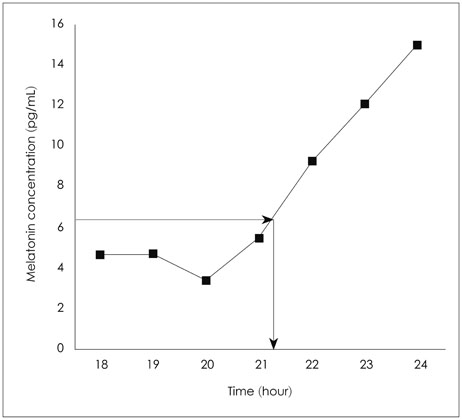J Korean Neuropsychiatr Assoc.
2015 Nov;54(4):600-604. 10.4306/jknpa.2015.54.4.600.
A Case of Bright Light Therapy in a Treatment Resistant Patient with Major Depressive Disorder
- Affiliations
-
- 1Department of Psychiatry, Kangwon National University Hospital, Chuncheon, Korea. jhielee@kangwon.ac.kr
- 2Department of Psychiatry, Yesarang Hospital, Cheongju, Korea.
- 3Department of Psychiatry, Kangwon National University School of Medicine, Chuncheon, Korea.
- KMID: 2149345
- DOI: http://doi.org/10.4306/jknpa.2015.54.4.600
Abstract
- The light therapy has been known to be effective to non-seasonal affective disorder as well as seasonal affective disorder. Although the mechanism of action of light therapy for depressive disorder has not been verified yet, its clinical application revealed similar effects like antidepressants and relatively smaller side effects. However, it is not common to apply the light therapy for treatment resistant depressive disorder. This case report indicates a robust efficacy of light therapy and its clinical usefulness, illustrating the complete remission in a treatment resistant patient with major depressive disorder after bright light therapy.
Keyword
MeSH Terms
Figure
Reference
-
1. Rosenthal NE, Sack DA, Gillin JC, Lewy AJ, Goodwin FK, Davenport Y, et al. Seasonal affective disorder. A description of the syndrome and preliminary findings with light therapy. Arch Gen Psychiatry. 1984; 41:72–80.2. Terman M. Task force report on light treatment for sleep disorders. J Biol Rhythms. 1995; 10:101–176.
Article3. Rosenthal NE, Sack DA, Carpenter CJ, Parry BL, Mendelson WB, Wehr TA. Antidepressant effects of light in seasonal affective disorder. Am J Psychiatry. 1985; 142:163–170.
Article4. Eastman CI, Young MA, Fogg LF, Liu L, Meaden PM. Bright light treatment of winter depression: a placebo-controlled trial. Arch Gen Psychiatry. 1998; 55:883–889.5. Golden RN, Gaynes BN, Ekstrom RD, Hamer RM, Jacobsen FM, Suppes T, et al. The efficacy of light therapy in the treatment of mood disorders: a review and meta-analysis of the evidence. Am J Psychiatry. 2005; 162:656–662.
Article6. Even C, Schröder CM, Friedman S, Rouillon F. Efficacy of light therapy in nonseasonal depression: a systematic review. J Affect Disord. 2008; 108:11–23.
Article7. Bunney WE, Bunney BG. Molecular clock genes in man and lower animals: possible implications for circadian abnormalities in depression. Neuropsychopharmacology. 2000; 22:335–345.
Article8. Boivin DB. Influence of sleep-wake and circadian rhythm disturbances in psychiatric disorders. J Psychiatry Neurosci. 2000; 25:446–458.9. Grandin LD, Alloy LB, Abramson LY. The social zeitgeber theory, circadian rhythms, and mood disorders: review and evaluation. Clin Psychol Rev. 2006; 26:679–694.
Article10. Rusting CL, Larsen RJ. Diurnal patterns of unpleasant mood: associations with neuroticism, depression, and anxiety. J Pers. 1998; 66:85–103.
Article11. Zhou JN, Riemersma RF, Unmehopa UA, Hoogendijk WJ, van Heerikhuize JJ, Hofman MA, et al. Alterations in arginine vasopressin neurons in the suprachiasmatic nucleus in depression. Arch Gen Psychiatry. 2001; 58:655–662.
Article12. Terman M, Terman JS. Light therapy for seasonal and nonseasonal depression: efficacy, protocol, safety, and side effects. CNS Spectr. 2005; 10:647–663. quiz 672.
Article13. Wirz-Justice A, Benedetti F, Berger M, Lam RW, Martiny K, Terman M, et al. Chronotherapeutics (light and wake therapy) in affective disorders. Psychol Med. 2005; 35:939–944.
Article14. McEnany GW, Lee KA. Effects of light therapy on sleep, mood, and temperature in women with nonseasonal major depression. Issues Ment Health Nurs. 2005; 26:781–794.
Article15. Riemersma-van der Lek RF, Swaab DF, Twisk J, Hol EM, Hoogendijk WJ, Van Someren EJ. Effect of bright light and melatonin on cognitive and noncognitive function in elderly residents of group care facilities: a randomized controlled trial. JAMA. 2008; 299:2642–2655.
Article16. Lewy AJ. Circadian misalignment in mood disturbances. Curr Psychiatry Rep. 2009; 11:459–465.
Article17. American Psychiatric Association. Practice guideline for the treatment of patients with major depressive disorder. 3rd ed. Arlington, VA: American Psychiatric Association;2010. p. 152.18. Levitt AJ, Joffe RT, Kennedy SH. Bright light augmentation in antidepressant nonresponders. J Clin Psychiatry. 1991; 52:336–337.19. Echizenya M, Suda H, Takeshima M, Inomata Y, Shimizu T. Total sleep deprivation followed by sleep phase advance and bright light therapy in drug-resistant mood disorders. J Affect Disord. 2013; 144:28–33.
Article20. Berlim MT, Turecki G. What is the meaning of treatment resistant/refractory major depression (TRD)? A systematic review of current randomized trials. Eur Neuropsychopharmacol. 2007; 17:696–707.
Article21. McIntyre IM, Norman TR, Burrows GD, Armstrong SM. Melatonin rhythm in human plasma and saliva. J Pineal Res. 1987; 4:177–183.22. Terman M, Terman JS. Light therapy. In : Kryger MH, Roth T, Dement WC, editors. Principles and practice of sleep medicine. 5th ed. St. Louis, MO: Elsevier Saunders;2011. p. 1682–1693.23. Keijzer H, Smits MG, Duffy JF, Curfs LM. Why the dim light melatonin onset (DLMO) should be measured before treatment of patients with circadian rhythm sleep disorders. Sleep Med Rev. 2014; 18:333–339.
Article24. Pail G, Huf W, Pjrek E, Winkler D, Willeit M, Praschak-Rieder N, et al. Bright-light therapy in the treatment of mood disorders. Neuropsychobiology. 2011; 64:152–162.
Article
- Full Text Links
- Actions
-
Cited
- CITED
-
- Close
- Share
- Similar articles
-
- A Case of Morning Light Treatment for a Depressive Episode with Seasonal Pattern
- Trial of Light Therapy on a Woman with LLPDD: A Case Report
- Baclofen Abuse due to Its Hypomanic Effect in Patients with Alcohol Dependence and Comorbid Major Depressive Disorder
- A Case of Seasonal Affective Disorder with Hypersomnia: Polysomnographic findings Before and After Light Therapy
- Treatment-Resistant Depression Entering Remission Following a Seizure during the Course of Repetitive Transcranial Magnetic Stimulation


